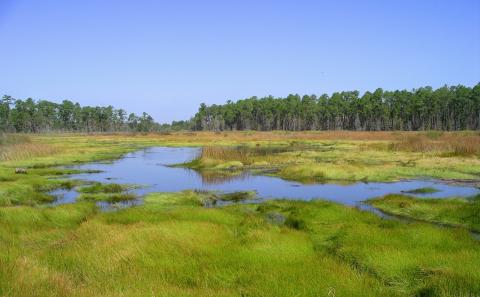Many of our projects are designed to benefit multiple restoration types. Projects that restore coastal marshes may also benefit wildlife, improve water quality, and enhance recreational opportunities. Additionally, a beach project that enhances recreational access to beaches may also educate visitors about the local birds and their nests.
 |
Louisiana Outer Coast This Louisiana Restoration Area project restores beach, dune, and back-barrier marsh habitats as well as habitat for brown pelicans, terns, skimmers, and gulls at four barrier island locations in the Louisiana Restoration Area. These projects will restore eroded areas and vegetation that have historically buffered the mainland. They will also rebuild critically important bird nesting areas. |
 |
Grand Bay Land Acquisition and Habitat Management in Mississippi This Mississippi Restoration Area project restores and protects forested wetlands, estuarine marshes, and other coastal habitat that will provide foraging, loafing and nesting for bird species that were injured by the oil spill. The land acquisition, restoration, and management activities, including prescribed fires, reduce the threat of development and directly enhance habitat, which helps restore birds. |
 |
Southwestern Coffee Island in Alabama This Alabama Restoration Area project supports planning activities for restoration and creation of tidal wetlands and other colonial nesting bird breeding and foraging habitat along the southwest shoreline of Coffee Island. The project will synthesize nesting data in coastal Alabama and conduct engineering, design, and permitting for future habitat restoration on Coffee Island. |
Read the Trustee Council's statement on 10 years after the Deepwater Horizon oil spill >>


